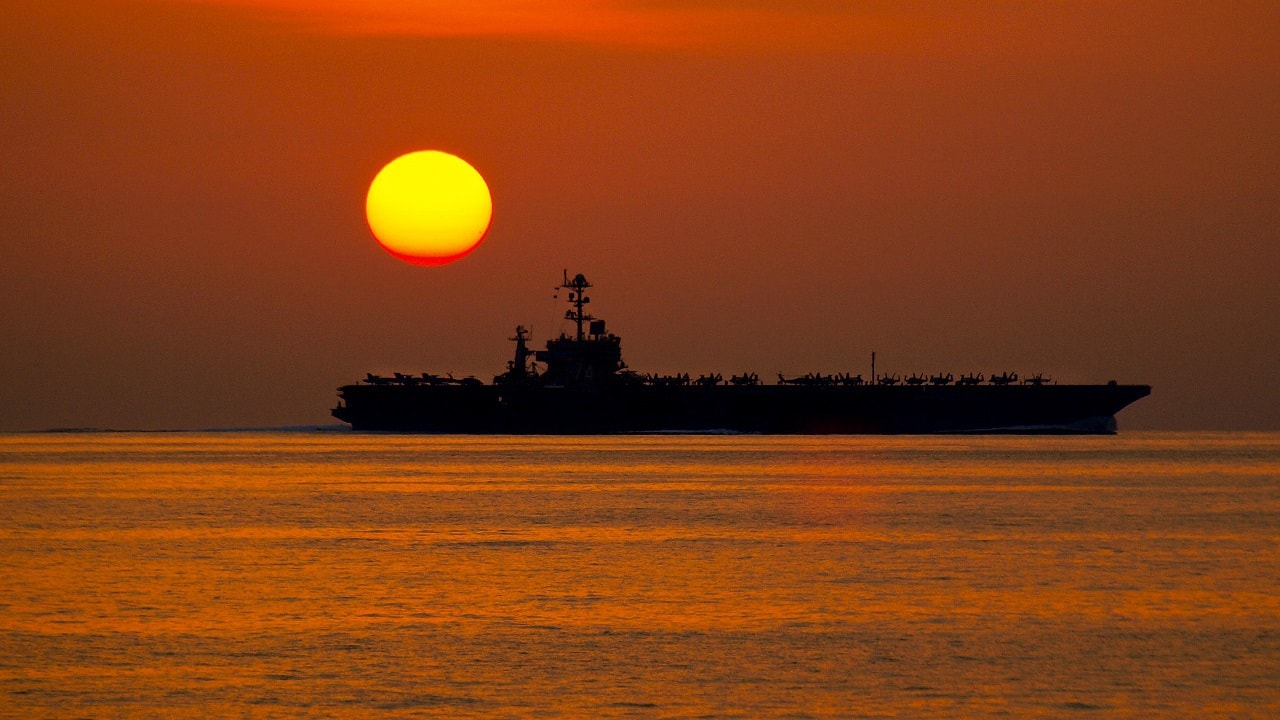The US Navy is worried that Chinese economic and technological might could translate into naval might. Specifically, aircraft carrier power-projection capabilities: Three Chinese aircraft carriers are enough to worry about. But what if a fourth is on the way? Aircraft recently spotted at a Chinese naval air base might have been training for launches from catapults that differ from the ski-jumps China’s current carriers use. This activity could hint at yet another Chinese flat-top in development.
The Chinese are already building a third aircraft carrier, the Type 003, that will soon undergo sea trials. While a theoretical fourth carrier would still be years away, the nature of this aircraft training is enough to make military analysts wonder how far China’s carrier program has come.
New Skills for Chinese Pilots
Satellite photos show what appears to be a new kind of naval flight training. The images spotted two FC-31 Gyrfalcon stealth fighters and an unknown number of J-15 carrier-based fighter jets at the Chinese flight training area in Liaoning province.
The FC-31 resembles an American F-35 Lightning II. It is a single-seat, twin-engine, medium-sized multi-role interceptor with stealth characteristics including a signature-reducing coating.
The J-15 is a clone of Russia’s Su-33 carrier-based warplane, though China’s fourth-generation J-15 is believed to have upgraded sensors and radar, as well as improved wings. The J-15 is accustomed to ski-jump vertical takeoffs and landings. However, the Chinese have planned for the naval fighter to someday launch from a catapult on the Type 003. This could explain the training session spotted by satellite.
Aiming for Blue Water
The Chinese have high hopes for their fourth aircraft carrier. China’s first two carriers, the Liaoning and the Shandong, are conventional diesel-powered ships. The Type 003 is also a diesel-powered model. Beijing’s goal is to introduce a nuclear-powered carrier – one with true blue-water capability that can project power and dominate the Indo-Pacific region.
Plans for a fourth carrier have been closely guarded, but according to Popular Science, the shipbuilder accidentally spilled some details. Leaked documents claim the carrier “will displace between ninety thousand and one hundred thousand tons and have electromagnetically assisted launch system (EMALS) catapults for getting aircrafts off the deck. It’ll likely carry a large air wing of J-15 fighters, J-31 stealth fighters, KJ-600 airborne early warning and control aircraft, anti-submarine warfare helicopters, and stealth attack drones.”
An All-Around Upgrade
The FC-31s and J-15s are training at a facility that has simulated ski-jump takeoffs, but also has the means to practice different catapults for carrier-borne launches. The Chinese navy modeled this training from Russia. It hopes to give Chinese pilots the skills and tools needed to engage in comprehensive, authentic carrier operations – the trickiest and most dangerous feats in aviation.
The Chinese will probably have to build more fighters if they are to supply four carriers. They also have to work on adding to the number of support aircraft for airborne command and control, as well as anti-submarine warfare. Operations with EMALS catapults come with a learning curve, but the Chinese are working to acquire the necessary skills. While not everyone believes that additional carriers and a new air combat group are anywhere close to being ready, the Chinese are showing that they are strategically minded when it comes to preparing for carrier warfare.
Now serving as 1945’s Defense and National Security Editor, Brent M. Eastwood, PhD, is the author of Humans, Machines, and Data: Future Trends in Warfare. He is an Emerging Threats expert and former U.S. Army Infantry officer. You can follow him on Twitter @BMEastwood.

